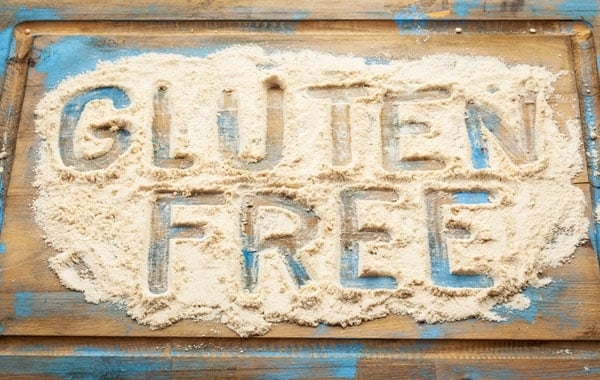After polishing off way more Italian food than anticipated, I told my friend I felt really full. She immediately chimed in, “You need to eliminate gluten from your diet.” I processed what she said, but I still believed that five garlic knots drenched in oil and a mountain of spaghetti is simply too much food in one sitting for a five-foot woman. I felt full, I believed, because I ate too much. I didn’t feel this was an unreasonable assessment. Though, I did wish I had pushed myself away from the table sooner. It was more like emotional eating, but that’s an entirely different story.
Hot Off The Press
While we’re on the subject of gluten (or the absence of it), Jennifer Lawrence recently made bigger headlines than she probably expected after being quoted in Vanity Fair as saying, “The gluten-free diet is the new cool eating disorder, the ‘basically I just don’t eat carbs’ .“ Apparently, gluten-free advocates didn’t take well to her remarks and the controversy wages on.
Yet the crowd is clamoring for more. Mintel, a market research firm, reveals that the gluten-free industry grew by 44 percent from 2011 to 2013 and pegs the industry’s size at approximately $10.5 billion. Gluten free is to 2014 as the low-and-no carb craze was to the ‘90s. Even the Girls Scouts have jumped on the bandwagon with a gluten-free Peanut Butter Oatmeal Cookie that is available in designated markets and may be rolled out nationwide after further review of the positive results of its 2013/14 pilot program.
Just The Facts
Essentially, gluten is a protein found in grains, such as wheat (including bulgur, durum, semolina, and spelt); barley; and rye. And, yes, gluten can certainly be life-threatening for individuals suffering from celiac disease, which is an autoimmune disorder that tends to run in families. For afflicted individuals, gluten can cause inflammation in the small intestine – among other symptoms. Gluten can also have serious consequences for people with herpetiformis, and gluten sensitivity. These are well-documented medical conditions and, in such cases, the issue of gluten must be taken seriously. That bears repeating. Celiac disease, herpetiformis, and gluten sensitivity should not be taken lightly and should be managed under the guidance of a physician. Of course, Dawn at The Meadows caters to clients with a wide range of special dietary needs, one of these being gluten free.
Uneducated Consumers
As a result of all this gluten talk, I sought out gluten-free products to see if they were necessarily healthier than their gluten counterparts. At an upscale market in New York City, I conducted an experiment (an unscientific experiment) in the gluten-free section. It was here that I asked two consumers in the process of stockpiling their shopping carts with gluten-free brownies why they opted for such products. “They’re really good and healthy,” one thirty-something girl insisted. “I read it’s an easy way to lose weight,” shared a middle-aged woman. When I asked these women to explain or describe gluten, they could not – although the thirty-something girl offered that gluten was fattening. Jimmy Kimmel conducted a similar experiment about gluten that he caught on camera that’s sure to elicit laughs (https://www.youtube.com/watch?v=AdJFE1sp4Fw).
Gluten Free Comes At A Price
Gluten free comes at a price – in terms of cost and nutritional benefits. Gluten-free mania is putting food (gluten free and otherwise) on the table for manufacturers who are reaping healthy profits from rolling out high-ticket items in this sizzling hot category.
Gluten-free labels are slapped on products that never had gluten, such as some green beans and yogurt. Unfortunately, some gluten-free offerings contain as much or even more sugar, sodium, fat, and calories than their traditional counterparts. A gluten-free donut is still a donut. Processed foods are not the best choice under any circumstances. As such products are also usually lower in fiber, so you might not feel as satisfied after meals.
Bear in mind that diabetes is much more prevalent than celiac disease. Sugar is adversely impacting a much greater percentage of the population than gluten. With November being National Diabetes Awareness Month, it’s important to be mindful of sugar and to be aware how much of it you’re consuming. Sugar has no nutritional gains for anyone, and there are few – if any – sugar advocates (aside from the manufacturers who produce these sugary goods!)
Calories Count
For example, King Arthur Flour’s Gluten-Free Chocolate Cake Mix has 21 grams of sugar and 280 calories per slice; Bakery on Main’s Nutty Cranberry Maple Gluten-Free Granola has 27 grams of sugar and 420 calories for a single cup; and Enjoy Life’s Soft Baked Chocolate Chip Cookies have 10 grams of sugar and 120 calories for two small cookies.
Beyond nutritional and cost factors, an obsession to avoid gluten – when there is no medical reason to do so – can potentially trigger eating disorders much like orthorexia nervosa (an unhealthy obsession with healthy eating). Becoming preoccupied with gluten (or any other type of food or substance) can be an action for distraction and a sign that something in a person’s life may be out of balance.
The bottom line is that eating a healthy and balanced diet that includes fruits and vegetables; lean meat; fish; beans; nuts; brown rice; and quinoa will keep gluten to a minimum – and is your best bet for the long haul. So, next time you’re perusing the gluten-free goodies aisle and something round that’s drenched in chocolate catches your attention, remember that a gluten-free donut is still a donut.
For information about any of the services offered by The Meadows family of treatment programs, feel free to contact one of our Intake Coordinators at 800-244-4949 or Contact Us. Let us know how we can be of service to you or your loved ones.

